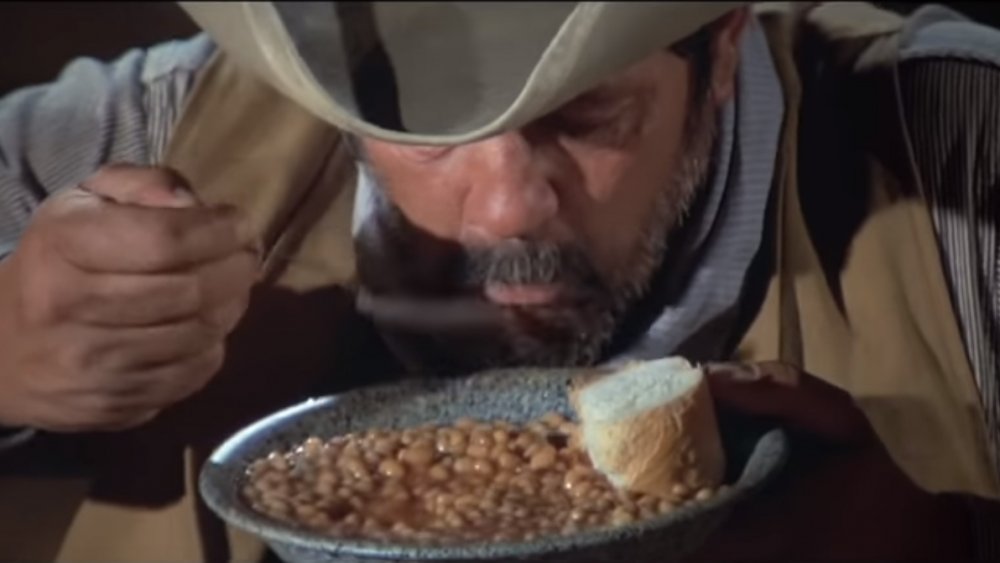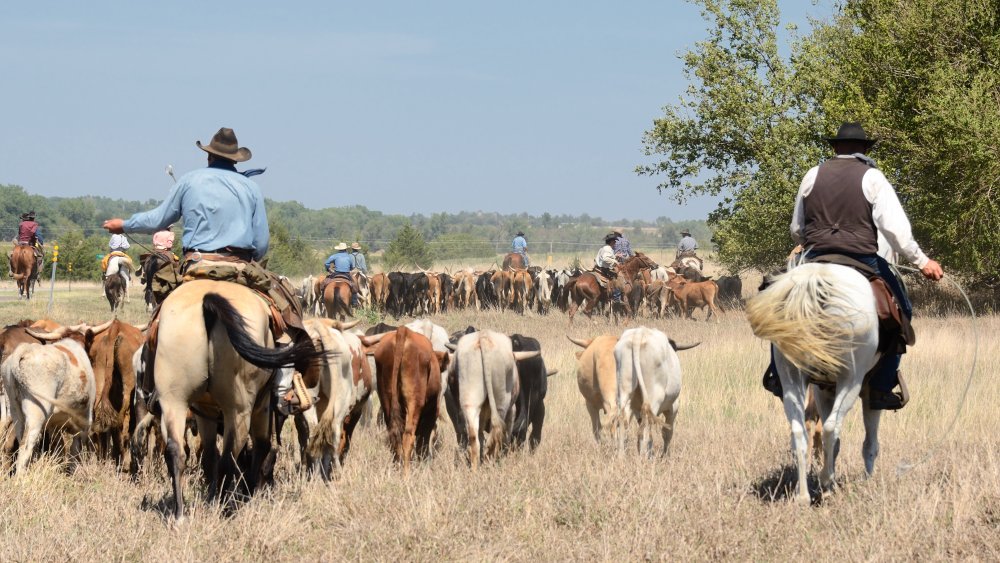What Did Cowboys Really Eat On Old West Trail Drives?
One of the most famous food scenes in modern cinematic history takes place in Mel Brooks's western farce Blazing Saddles. The cowboys settle down for an evening meal of beans, with typical, albeit immediate, digestive reaction. It's actually accurate — beans often cause gas, and yes, cowboys often ate beans on the trail. That was especially true in the early days of the trail drives, before rancher and cattle baron Charles Goodnight realized that he could attract and keep his help if he took better care of them on the job. Goodnight is often credited with the invention of the chuck wagon. Whereas before, cowboys ate whatever they could carry with them — dried meat, beans, perhaps biscuits — now they could have freshly prepared, hot food waiting for them during the day.
Most days, the drive's cook, often referred to as "cookie," worked longer hours than the cowboys themselves. He would be up long before the drovers, grinding coffee and working with his sourdough starter, which in turn would be used to prepare bread, biscuits, or flapjacks for breakfast. Bacon, or sowbelly, was a staple as well, since it was smoked and cured and traveled well.
Dinner on the hoof
While the crew ate, the cook was cleaning up and moving ahead of the herd to the spot chosen for the noon break. Lunch was often leftovers from breakfast, and again, the cook in his chuck wagon preceded the herd, collecting firewood along the way, stopping in time to have dinner hot and waiting. Beefsteaks were served from time to time, and if the cowboys brought in fresh game, that could be added to the dinner menu. As he drove, the cook would keep his eyes open for such things as bird nests, with possible fresh eggs to use in a special desert. Other ingredients kept on hand included dried fruit, flour, salt, syrup, and, yes, beans. A good cook would use several different recipes to add variety as well as flavor to that staple.
In addition to everything else, it wasn't at all unusual for the cook to also serve as a doctor, barber, veterinarian, letter-writer, and even father-figure to young men a long way from home.

